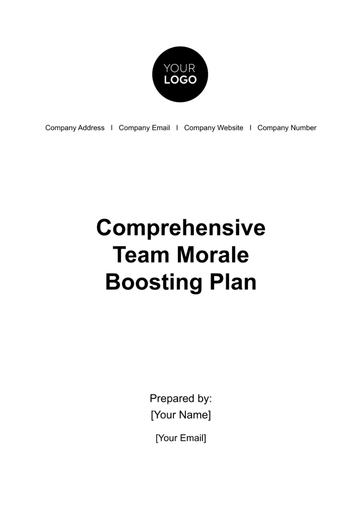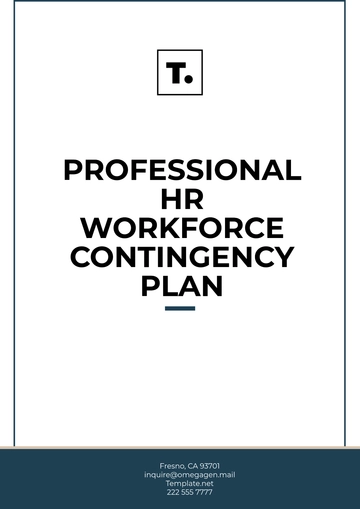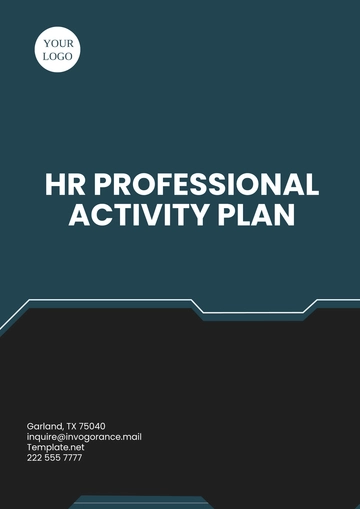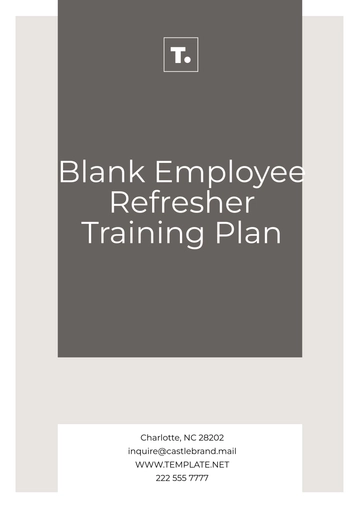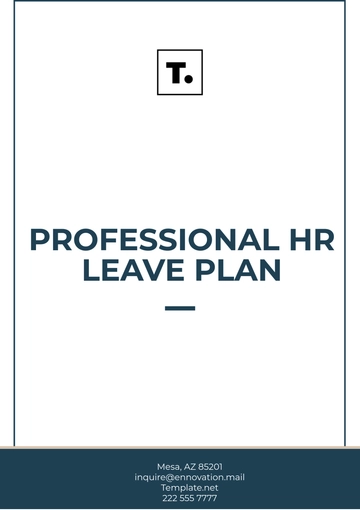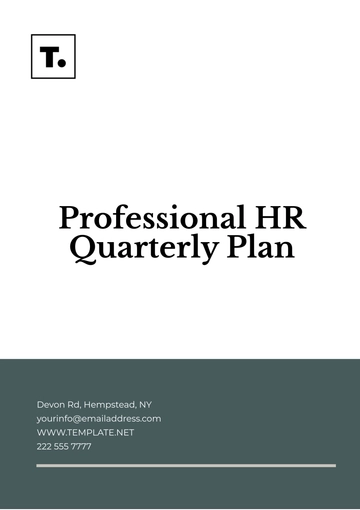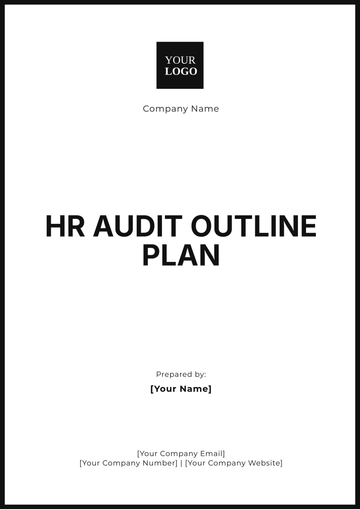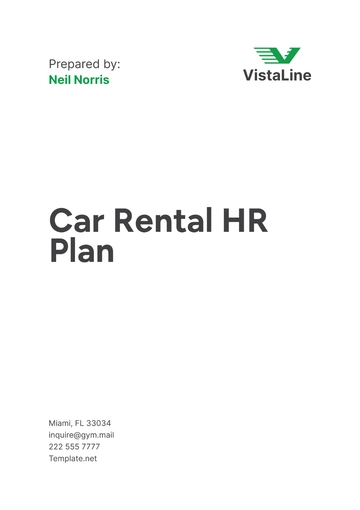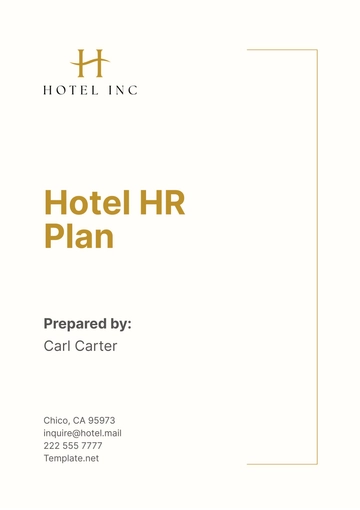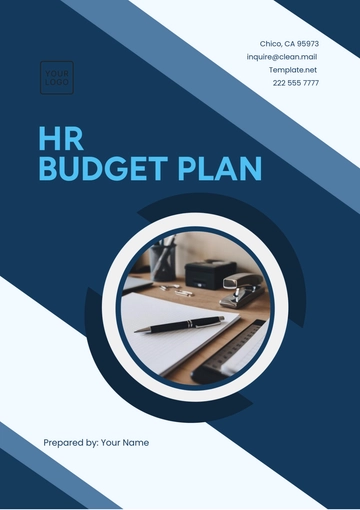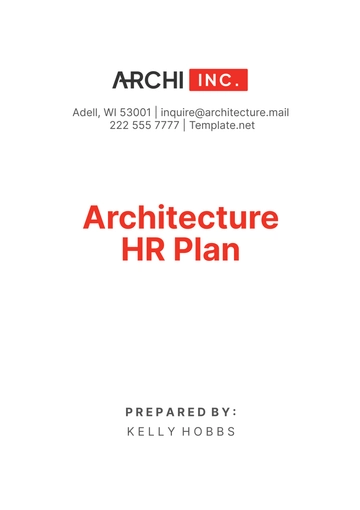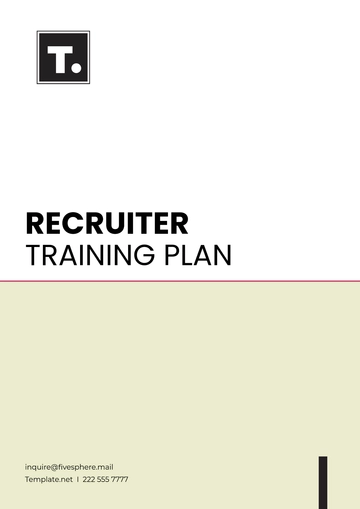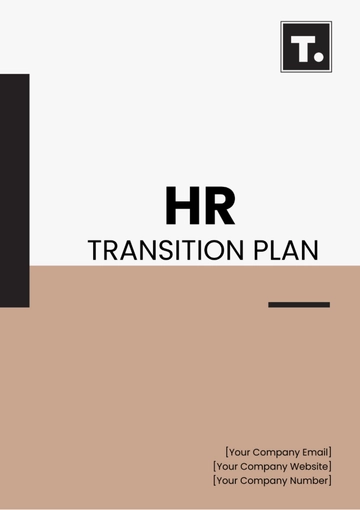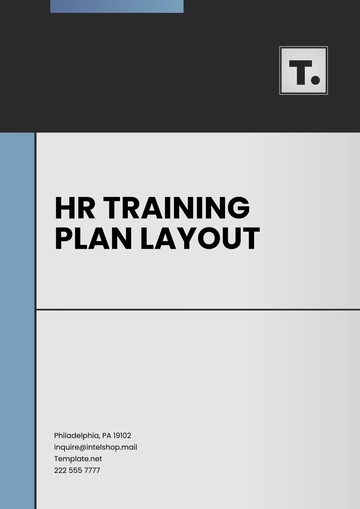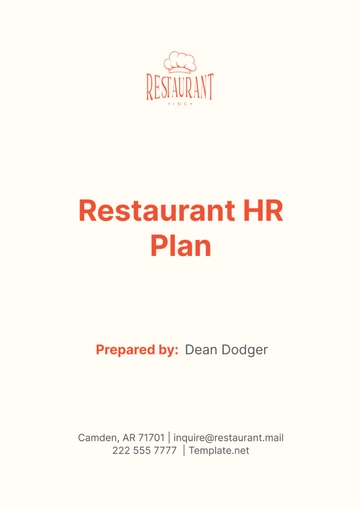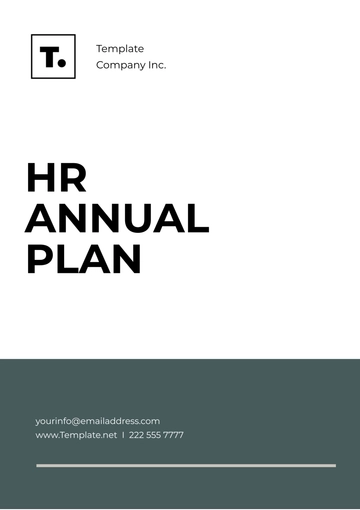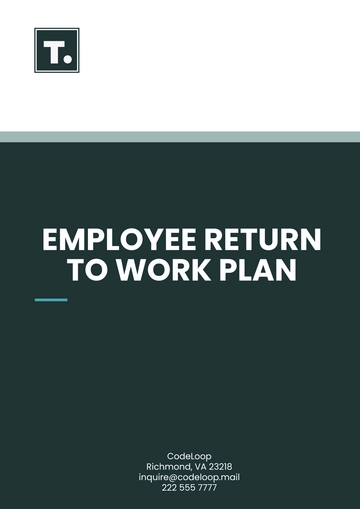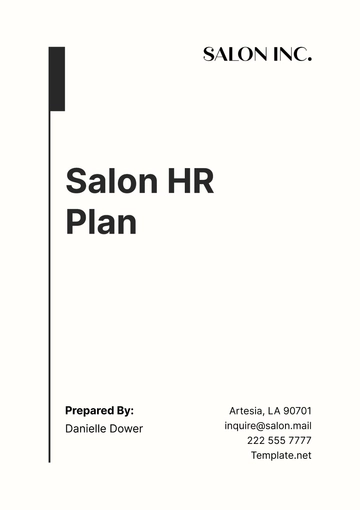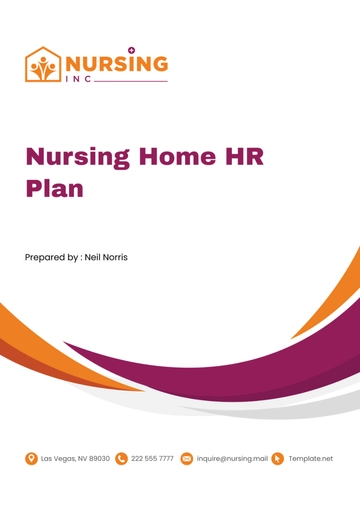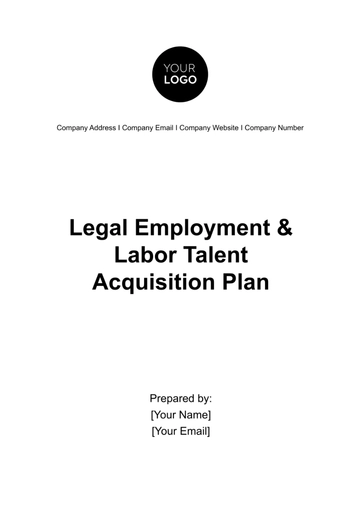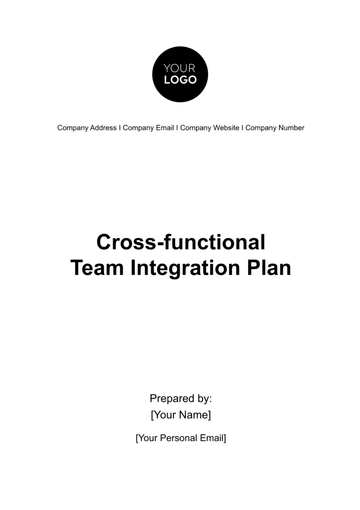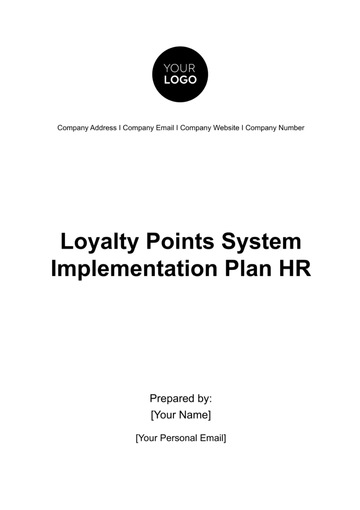Free HR Plan
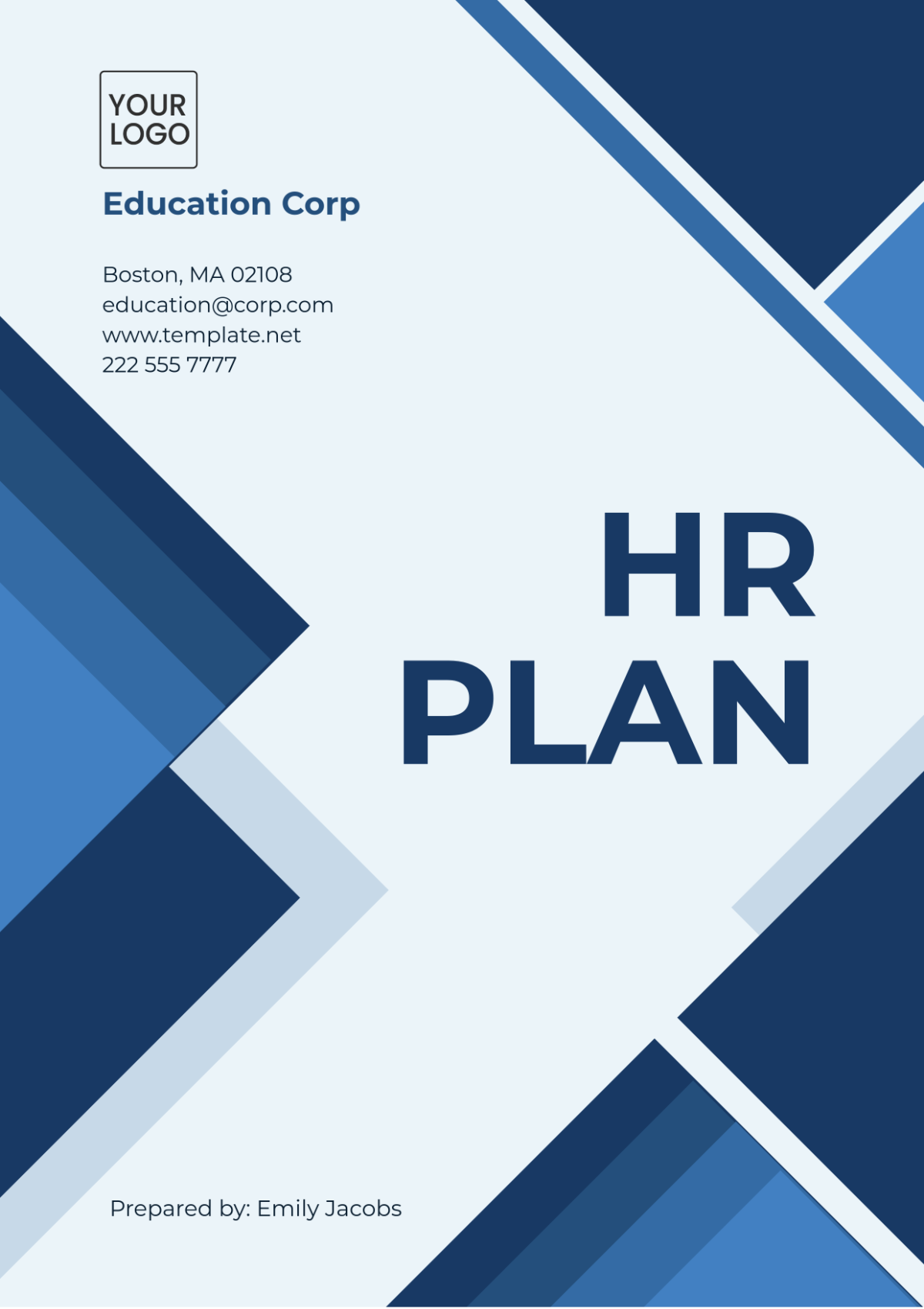
I. Introduction
Recruitment at [Your Company Name] is more than filling vacancies; it’s about bringing in individuals who will contribute to our mission and drive our business forward. This plan provides a clear framework for the entire recruitment lifecycle, ensuring that we attract the right candidates, assess them thoroughly, and integrate them smoothly into our team.
II. Recruitment Objectives
Attract Highly Qualified Candidates: Increase the pool of applicants by [30%] by expanding sourcing channels and enhancing employer branding.
Improve Candidate Assessment: Implement structured interviews and assessment tools to ensure candidates meet job requirements and fit the company culture.
Reduce Time-to-Hire: Streamline the recruitment process to reduce the average time-to-hire by [20%], ensuring timely placement of qualified candidates.
Enhance Diversity and Inclusion: Develop recruitment strategies that promote a diverse workforce, increasing diversity hires by [15%] annually.
III. Recruitment Process
Understanding and identifying staffing needs is the first step in the recruitment process. This involves evaluating current workforce capabilities, anticipating future needs, and identifying gaps that require new hires.
Workforce Planning: Conduct regular workforce planning meetings to assess current and future staffing needs based on business goals.
Job Analysis: Review and update job descriptions to reflect the skills, qualifications, and experience required for each role.
Approval Process: Obtain necessary approvals from department heads and senior management before initiating the recruitment process.
A. Sourcing Candidates
Effective sourcing is essential to attracting a diverse and qualified candidate pool. This section outlines various channels and strategies to reach potential candidates.
Internal Job Postings: Promote job openings internally to encourage career advancement within the company.
External Job Postings: Advertise on various job boards, social media platforms, and industry-specific sites to reach a broader audience.
Recruitment Agencies: Partner with recruitment agencies to access specialized talent for hard-to-fill positions.
Networking and Referrals: Leverage employee networks and referral programs to attract high-quality candidates.
B. Screening and Selection
Screening and selecting candidates is a critical phase that determines the quality of hires. A structured approach ensures that candidates are assessed fairly and thoroughly.
Resume Screening: Implement standardized criteria for resume review to identify candidates who meet the basic qualifications.
Initial Phone Screening: Conduct preliminary interviews via phone to evaluate candidates' interest, qualifications, and communication skills.
Structured Interviews: Use behavioral and situational interview questions to assess candidates' competencies and cultural fit.
Assessment Tests: Incorporate skills tests, personality assessments, or case studies to objectively evaluate candidates' abilities.
C. Interview Process
The interview process is designed to provide a comprehensive evaluation of the candidate’s qualifications, experience, and fit within the company. Multiple interview stages ensure a well-rounded assessment.
First-Round Interviews: Typically conducted by HR to assess general fit and basic qualifications.
Technical Interviews: Conducted by the relevant department to assess specific skills and technical competencies.
Panel Interviews: Include multiple stakeholders to evaluate the candidate from different perspectives and ensure alignment with company culture.
Final Interview: Conducted by senior management or the hiring manager to make the final decision.
D. Offer and Negotiation
Once a suitable candidate is identified, extending an offer and negotiating terms is the next critical step. This ensures that both the candidate’s expectations and the company’s standards are met.
Offer Letter Preparation: Draft a formal offer letter outlining the terms of employment, including salary, benefits, and start date.
Negotiation: Engage in negotiations if necessary, focusing on a fair and mutually beneficial agreement.
Offer Acceptance: Confirm the candidate’s acceptance of the offer and initiate the onboarding process.
Rejection of Unsuccessful Candidates: Notify candidates who were not selected and maintain a positive relationship for future opportunities.
IV. Onboarding Process
Effective onboarding is crucial for integrating new hires into the company. This process ensures that new employees feel welcomed, supported, and prepared to succeed in their roles.
Pre-Arrival Communication: Send welcome materials and necessary paperwork to new hires before their start date.
Orientation Program: Conduct an orientation session to introduce new hires to the company culture, policies, and team members.
Training and Development: Provide job-specific training to equip new hires with the tools and knowledge needed for success.
Mentorship Program: Assign a mentor to guide new hires through their first few months, ensuring a smooth transition.
V. Diversity and Inclusion Initiatives
We believe that a diverse and inclusive workforce enhances innovation and drives business success. This section outlines initiatives to ensure our recruitment process is inclusive and equitable.
Diverse Sourcing Channels: Use channels that specifically target underrepresented groups to ensure a diverse candidate pool.
Unconscious Bias Training: Provide training for all interviewers to minimize biases during the recruitment process.
Diversity Metrics: Track and analyze diversity metrics to measure the effectiveness of our recruitment strategies.
Inclusive Job Descriptions: Ensure job descriptions are free of gendered language or other biases that could deter diverse candidates.
VI. Monitoring and Evaluation
Continuous monitoring and evaluation of the recruitment process are essential to ensure its effectiveness and alignment with company goals. This section details how we measure success and make necessary improvements.
Recruitment Metrics: Track key performance indicators such as time-to-hire, cost-per-hire, and candidate satisfaction.
Feedback Mechanisms: Gather feedback from new hires, hiring managers, and other stakeholders to identify areas for improvement.
Process Audits: Conduct regular audits of the recruitment process to ensure compliance with internal policies and external regulations.
Continuous Improvement: Regularly review and update recruitment strategies to adapt to changing business needs and market conditions.
VII. Compensation and Benefits
A competitive compensation and benefits package is essential to attract and retain top talent. This section outlines the key components of our offerings to ensure that [Your Company Name] remains an employer of choice.
Component | Description | Eligibility | Frequency |
|---|---|---|---|
Base Salary | A fixed amount of money paid to employees for their work, based on job role, experience, and market standards. | All employees | Bi-weekly/ Monthly |
Performance Bonuses | Additional compensation awarded for meeting or exceeding specific performance targets. | Eligible employees (based on role) | Annually/ Quarterly |
Health Insurance | Comprehensive health coverage including medical, dental, and vision benefits. | All full-time employees | Continuous (upon enrollment) |
Retirement Plans | Contributions to a 401(k) or other retirement savings plan, with potential employer matching. | All full-time employees | Monthly (Employer contribution) |
Paid Time Off (PTO) | Paid leave available for vacation, illness, or personal time. | All employees | Accrued Annually |
Sick Leave | Paid leave available specifically for illness or medical appointments. | All employees | Accrued Annually |
Maternity/Paternity Leave | Paid leave for the birth or adoption of a child. | Eligible employees | As per company policy |
Professional Development | Reimbursement or financial assistance for education, training, and certifications related to job roles. | Eligible employees | As per request and approval |
Tuition Reimbursement | Reimbursement for education expenses related to career advancement within the company. | Eligible employees | Upon completion of coursework |
Employee Assistance Program (EAP) | Confidential counseling and support services for personal or work-related issues. | All employees | Continuous (upon request) |
Our comprehensive compensation and benefits package is designed to reward employees fairly and support their overall well-being. It includes competitive base salaries, performance bonuses, health insurance, retirement plans, and various types of paid leave. Additionally, [Your Company Name] offers opportunities for professional growth through tuition reimbursement and development programs, underlining our commitment to the career advancement of our staff.
VIII. Conclusion
The plan outlined above is designed to ensure that [Your Company Name] attracts and retains top talent that aligns with our business goals and culture. By following these structured procedures, we can streamline the recruitment process, reduce time-to-hire, and enhance the overall quality of our hires. Continuous monitoring and evaluation will ensure that our recruitment strategies remain effective and adaptive to the changing needs of the company and the market.
- 100% Customizable, free editor
- Access 1 Million+ Templates, photo’s & graphics
- Download or share as a template
- Click and replace photos, graphics, text, backgrounds
- Resize, crop, AI write & more
- Access advanced editor
Strategize your HR initiatives with our HR Plan Template from Template.net. Fully customizable and editable, this template offers a detailed and structured format. Easily personalize the plan, editable in our Ai Editor Tool, to outline your HR objectives, strategies, and timelines. Improve your HR management process with a comprehensive plan template.
You may also like
- Finance Plan
- Construction Plan
- Sales Plan
- Development Plan
- Career Plan
- Budget Plan
- HR Plan
- Education Plan
- Transition Plan
- Work Plan
- Training Plan
- Communication Plan
- Operation Plan
- Health And Safety Plan
- Strategy Plan
- Professional Development Plan
- Advertising Plan
- Risk Management Plan
- Restaurant Plan
- School Plan
- Nursing Home Patient Care Plan
- Nursing Care Plan
- Plan Event
- Startup Plan
- Social Media Plan
- Staffing Plan
- Annual Plan
- Content Plan
- Payment Plan
- Implementation Plan
- Hotel Plan
- Workout Plan
- Accounting Plan
- Campaign Plan
- Essay Plan
- 30 60 90 Day Plan
- Research Plan
- Recruitment Plan
- 90 Day Plan
- Quarterly Plan
- Emergency Plan
- 5 Year Plan
- Gym Plan
- Personal Plan
- IT and Software Plan
- Treatment Plan
- Real Estate Plan
- Law Firm Plan
- Healthcare Plan
- Improvement Plan
- Media Plan
- 5 Year Business Plan
- Learning Plan
- Marketing Campaign Plan
- Travel Agency Plan
- Cleaning Services Plan
- Interior Design Plan
- Performance Plan
- PR Plan
- Birth Plan
- Life Plan
- SEO Plan
- Disaster Recovery Plan
- Continuity Plan
- Launch Plan
- Legal Plan
- Behavior Plan
- Performance Improvement Plan
- Salon Plan
- Security Plan
- Security Management Plan
- Employee Development Plan
- Quality Plan
- Service Improvement Plan
- Growth Plan
- Incident Response Plan
- Basketball Plan
- Emergency Action Plan
- Product Launch Plan
- Spa Plan
- Employee Training Plan
- Data Analysis Plan
- Employee Action Plan
- Territory Plan
- Audit Plan
- Classroom Plan
- Activity Plan
- Parenting Plan
- Care Plan
- Project Execution Plan
- Exercise Plan
- Internship Plan
- Software Development Plan
- Continuous Improvement Plan
- Leave Plan
- 90 Day Sales Plan
- Advertising Agency Plan
- Employee Transition Plan
- Smart Action Plan
- Workplace Safety Plan
- Behavior Change Plan
- Contingency Plan
- Continuity of Operations Plan
- Health Plan
- Quality Control Plan
- Self Plan
- Sports Development Plan
- Change Management Plan
- Ecommerce Plan
- Personal Financial Plan
- Process Improvement Plan
- 30-60-90 Day Sales Plan
- Crisis Management Plan
- Engagement Plan
- Execution Plan
- Pandemic Plan
- Quality Assurance Plan
- Service Continuity Plan
- Agile Project Plan
- Fundraising Plan
- Job Transition Plan
- Asset Maintenance Plan
- Maintenance Plan
- Software Test Plan
- Staff Training and Development Plan
- 3 Year Plan
- Brand Activation Plan
- Release Plan
- Resource Plan
- Risk Mitigation Plan
- Teacher Plan
- 30 60 90 Day Plan for New Manager
- Food Safety Plan
- Food Truck Plan
- Hiring Plan
- Quality Management Plan
- Wellness Plan
- Behavior Intervention Plan
- Bonus Plan
- Investment Plan
- Maternity Leave Plan
- Pandemic Response Plan
- Succession Planning
- Coaching Plan
- Configuration Management Plan
- Remote Work Plan
- Self Care Plan
- Teaching Plan
- 100-Day Plan
- HACCP Plan
- Student Plan
- Sustainability Plan
- 30 60 90 Day Plan for Interview
- Access Plan
- Site Specific Safety Plan

